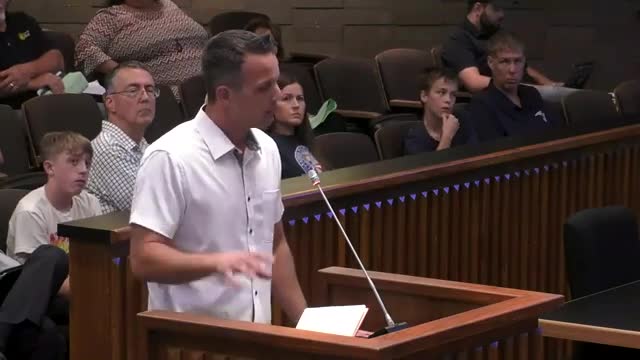Housing Development Sparks Controversy Over Density and Access
August 28, 2024 | Vacaville City, Solano County, California
This article was created by AI summarizing key points discussed. AI makes mistakes, so for full details and context, please refer to the video of the full meeting. Please report any errors so we can fix them. Report an error »

In a recent government meeting, discussions centered around the development plans for the Roberts Ranch area, focusing on housing density, transportation for students, and community partnerships. Key stakeholders, including developers and council members, addressed the implications of proposed changes to zoning and housing density in the region.
The developers emphasized their commitment to maintaining a low to medium density for the new housing project, citing previous agreements with builders and buyers. They expressed concerns that increasing density could undermine the goal of creating affordable housing, as it may lead to higher costs associated with adding accessory dwelling units (ADUs). The developers noted that while there is potential for future ADU implementation, it would be more feasible on larger lots, which are limited in the current design.
Transportation for students to the new Kairos facility was also a significant topic. Officials highlighted a partnership with the city that facilitates transportation options, including a direct ride program for high school students, as well as alternative methods like biking and carpooling. This initiative aims to ensure access for students from low-income neighborhoods, reflecting a commitment to community engagement and support.
Council members raised concerns about the need for moderate to high-density housing in the area, emphasizing the urgency of addressing housing shortages. They questioned the developers about the possibility of revising density plans to accommodate more housing options, particularly for families in need. The developers maintained that any changes would need to align with existing commitments and the overall vision for the community.
The timeline for the project was also discussed, with developers estimating that it could take approximately three to three and a half years from approval to the completion of the first homes. This timeline includes the necessary entitlement processes and infrastructure development.
Overall, the meeting underscored the complexities of balancing community needs, housing development, and transportation logistics, as stakeholders continue to navigate the challenges of urban planning and development in the region.
The developers emphasized their commitment to maintaining a low to medium density for the new housing project, citing previous agreements with builders and buyers. They expressed concerns that increasing density could undermine the goal of creating affordable housing, as it may lead to higher costs associated with adding accessory dwelling units (ADUs). The developers noted that while there is potential for future ADU implementation, it would be more feasible on larger lots, which are limited in the current design.
Transportation for students to the new Kairos facility was also a significant topic. Officials highlighted a partnership with the city that facilitates transportation options, including a direct ride program for high school students, as well as alternative methods like biking and carpooling. This initiative aims to ensure access for students from low-income neighborhoods, reflecting a commitment to community engagement and support.
Council members raised concerns about the need for moderate to high-density housing in the area, emphasizing the urgency of addressing housing shortages. They questioned the developers about the possibility of revising density plans to accommodate more housing options, particularly for families in need. The developers maintained that any changes would need to align with existing commitments and the overall vision for the community.
The timeline for the project was also discussed, with developers estimating that it could take approximately three to three and a half years from approval to the completion of the first homes. This timeline includes the necessary entitlement processes and infrastructure development.
Overall, the meeting underscored the complexities of balancing community needs, housing development, and transportation logistics, as stakeholders continue to navigate the challenges of urban planning and development in the region.
View full meeting
This article is based on a recent meeting—watch the full video and explore the complete transcript for deeper insights into the discussion.
View full meeting
